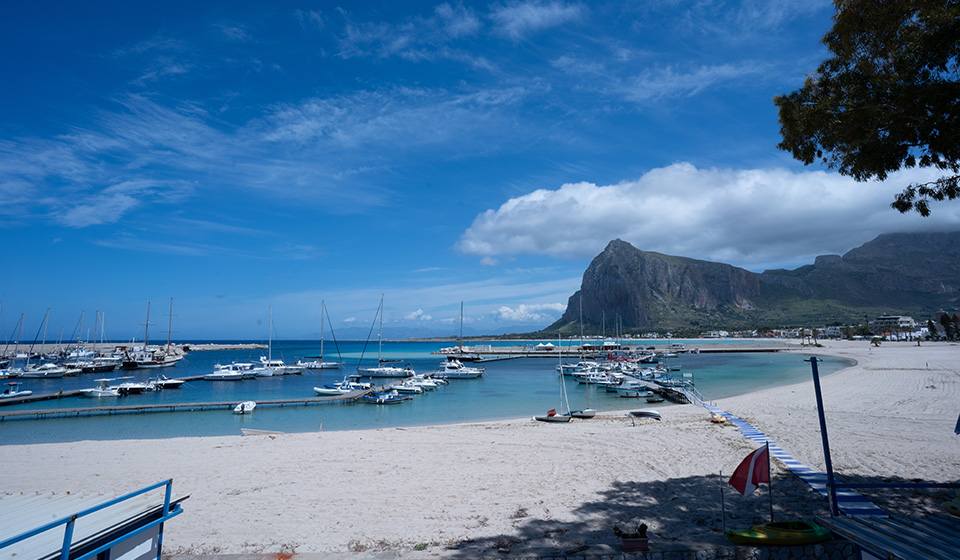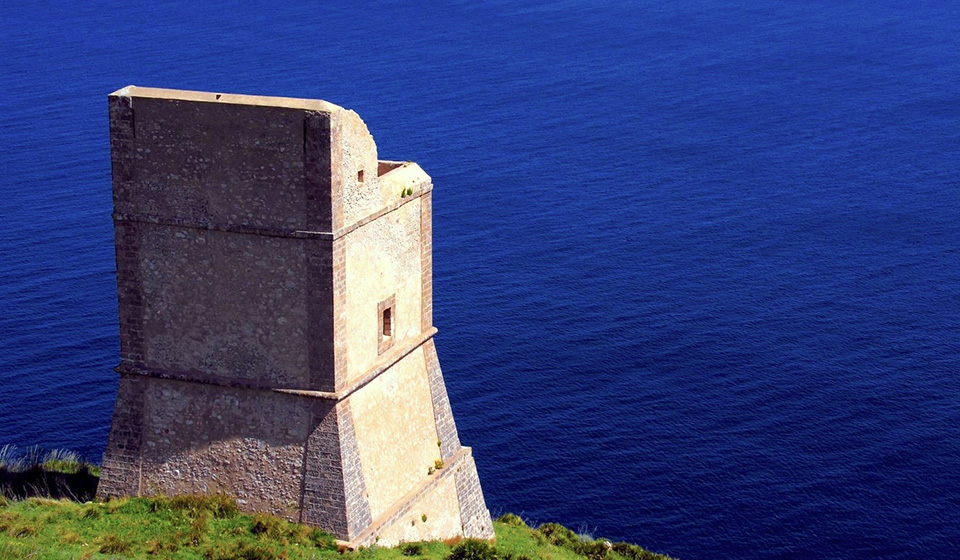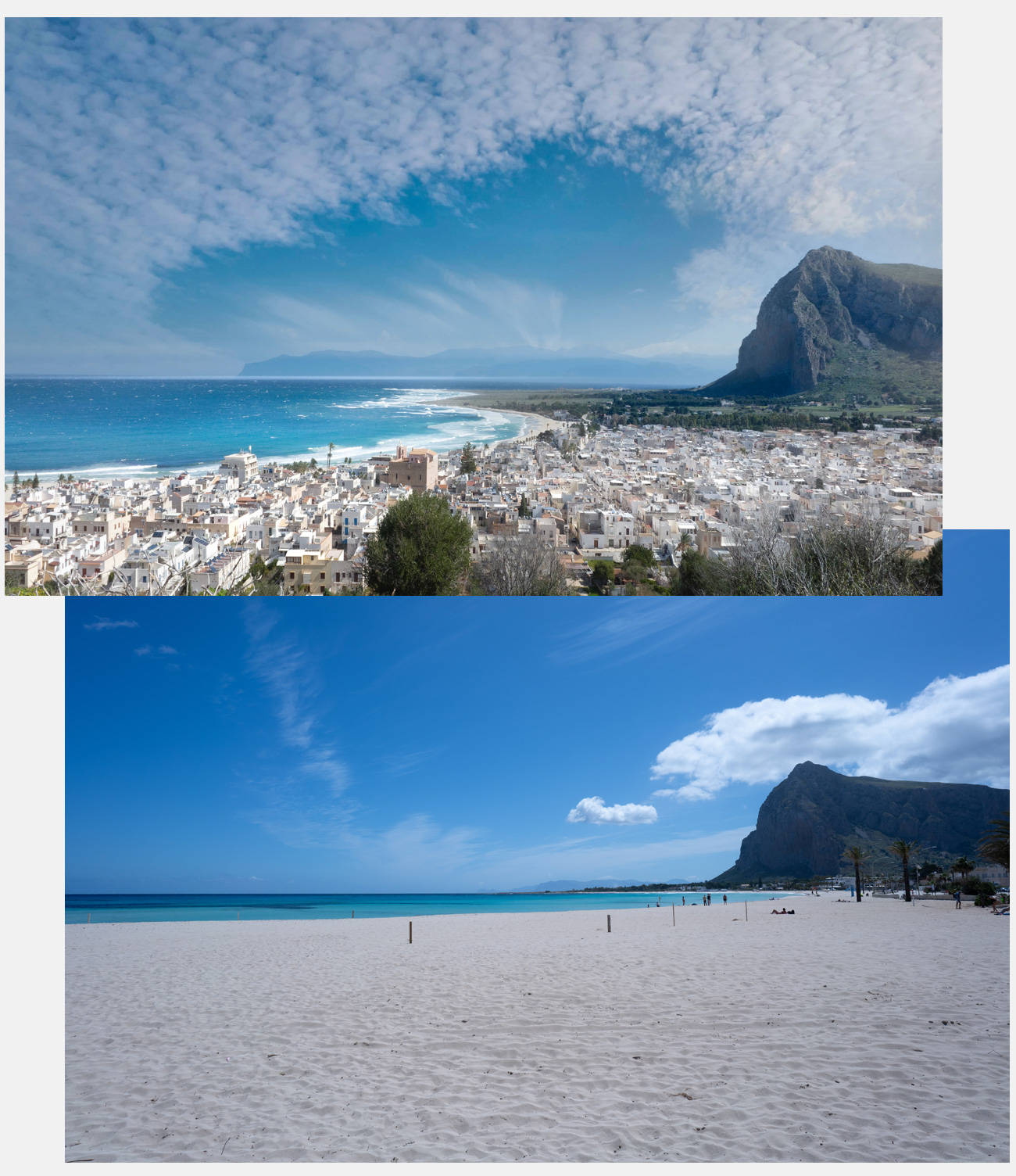
Three kilometres from Macari is San Vito Lo Capo. After leaving the sea to the west, one continues northwards into the main street of the village that leads, straight ahead, to the famous beach of clear sand with crystal-clear sea. The village, typically maritime, unfolds around this street and is mainly characterised by a few-storey houses where white predominates on the façades and blue or natural wood on the windows, and where gardens and courtyards are adorned with bougainvillea and jasmine that overtake the boundary walls, colouring the village streets.
On these same streets, restaurants, trattorias and inns welcome visitors, offering both local gastronomy and international cuisine, with a special 'eye' on the Mediterranean countries that, every year in September, gather in San Vito Lo Capo for the world-famous gastronomic festival (and not only) of the Cous Cous Fest. Fishing has been the main activity in the town for centuries and is still the protagonist for all those who appreciate good food... it is no coincidence that couscous in these parts, as along the entire Trapani coast, is traditionally made with fish, and it is in the same broth that the cascatelle di ricotta are cooked, a typical first course of this territory, not to be confused with the sweet ones, fried and dusted with icing sugar.
Three kilometres from Macari is San Vito Lo Capo. After leaving the sea to the west, one continues northwards into the main street of the village that leads, straight ahead, to the famous beach of clear sand with crystal-clear sea. The village, typically maritime, unfolds around this street and is mainly characterised by a few-storey houses where white predominates on the façades and blue or natural wood on the windows, and where gardens and courtyards are adorned with bougainvillea and jasmine that overtake the boundary walls, colouring the village streets.

On these same streets, restaurants, trattorias and inns welcome visitors, offering both local gastronomy and international cuisine, with a special 'eye' on the Mediterranean countries that, every year in September, gather in San Vito Lo Capo for the world-famous gastronomic festival (and not only) of the Cous Cous Fest. Fishing has been the main activity in the town for centuries and is still the protagonist for all those who appreciate good food... it is no coincidence that couscous in these parts, as along the entire Trapani coast, is traditionally made with fish, and it is in the same broth that the cascatelle di ricotta are cooked, a typical first course of this territory, not to be confused with the sweet ones, fried and dusted with icing sugar.
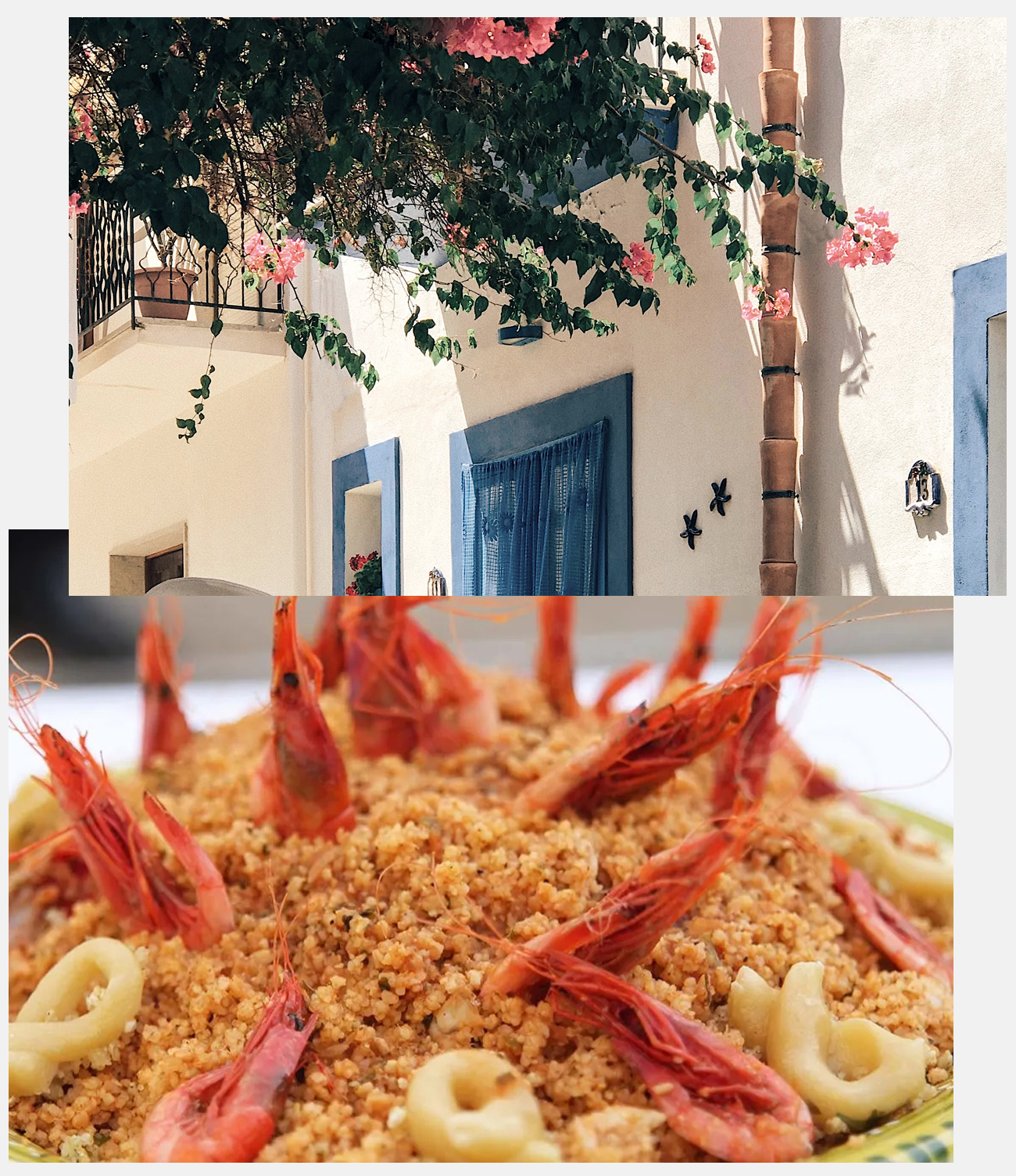
A stroll along Via Savoia leads to what is the town's most important monument: the Sanctuary of San Vito martire, a veritable fortress built around the original chapel - built in the 14th century in honour of the patron saint, who passed through here, together with his nurse Crescenzia and the pedagogue Modesto, on his flight from Mazara del Vallo - to defend it from enemy incursions and to safely accommodate the faithful who came here on pilgrimage. The building, constructed in this form in 1400, contained elegant lodgings for the nobles but also modest rooms for the humble people, as its fame drew the faithful from all over. This is why, in the 1700s, dwellings began to be built close to the large shrine, intended to offer board and lodging to the pilgrims: a small nucleus of dwellings around which the town proper would develop.
Inside the Sanctuary, one's attention is captured by the splendid, ancient altar, restored around 1780 with local marble, where among all stands out the statue of the very young San Vito (he suffered martyrdom at around 22 years of age) dated to the end of the 1500s and attributed to Antonello Gagini. The exterior of the building was restored recently, in 1998, including the watch tower incorporated in it.
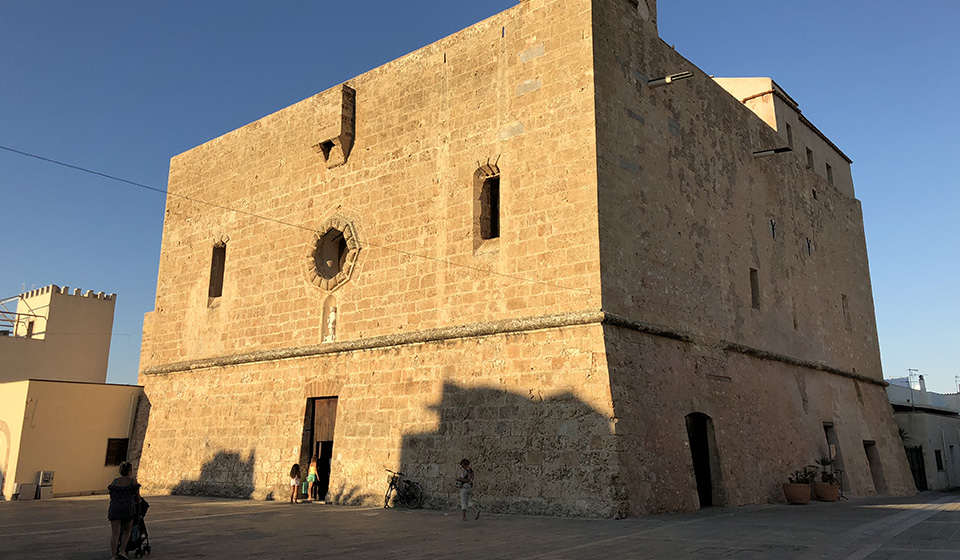
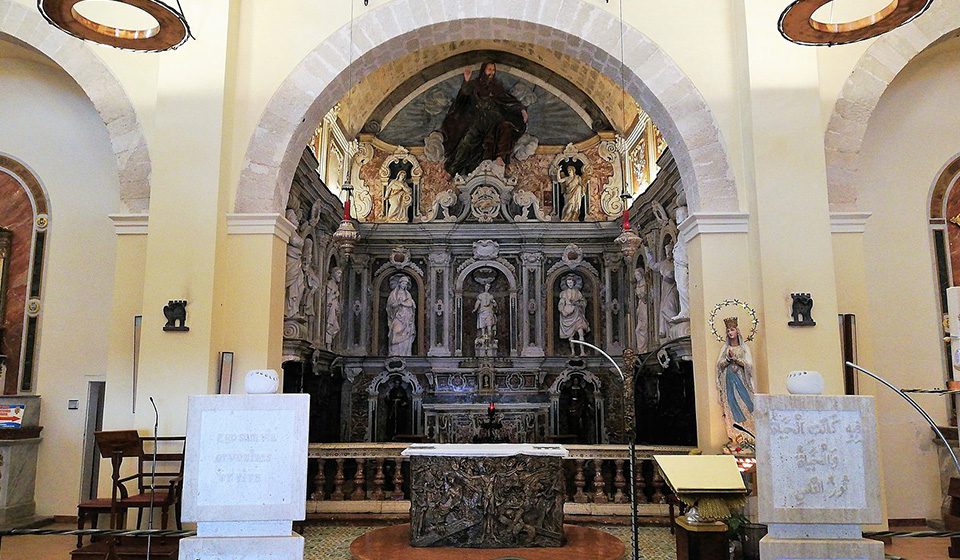
A stroll along Via Savoia leads to what is the town's most important monument: the Sanctuary of San Vito martire, a veritable fortress built around the original chapel - built in the 14th century in honour of the patron saint, who passed through here, together with his nurse Crescenzia and the pedagogue Modesto, on his flight from Mazara del Vallo - to defend it from enemy incursions and to safely accommodate the faithful who came here on pilgrimage. The building, constructed in this form in 1400, contained elegant lodgings for the nobles but also modest rooms for the humble people, as its fame drew the faithful from all over. This is why, in the 1700s, dwellings began to be built close to the large shrine, intended to offer board and lodging to the pilgrims: a small nucleus of dwellings around which the town proper would develop.
Inside the Sanctuary, one's attention is captured by the splendid, ancient altar, restored around 1780 with local marble, where among all stands out the statue of the very young San Vito (he suffered martyrdom at around 22 years of age) dated to the end of the 1500s and attributed to Antonello Gagini. The exterior of the building was restored recently, in 1998, including the watch tower incorporated in it.



As a result of the above, the architecture of the Sanctuary of St Vitus the Martyr appears as an interesting mixture of military construction elements - the tower, the loopholes, the gatekeeper -, religious elements such as the rose window, the niches, the bell tower, and civil elements such as the noble staircase and the balconies. This peculiarity can be seen by entering the Sanctuary Museum, housed in the rooms surrounding the church, which in past centuries were used as a garrison and "accommodation" for wealthy pilgrims, and which hosts, among other things, an important collection of sacred silverware, ancient vestments from 18th-century Palermitan manufactories, as well as a 17th-century chasuble, objects from daily life given as gifts to the Saint, symbols of popular devotion, as well as paintings and sculptures, including contemporary ones.
Also worth admiring is the wooden statue of the Immacolatella, from the ancient Tonnara del Secco and now restored, representing a young Virgin, beautiful in its simplicity.
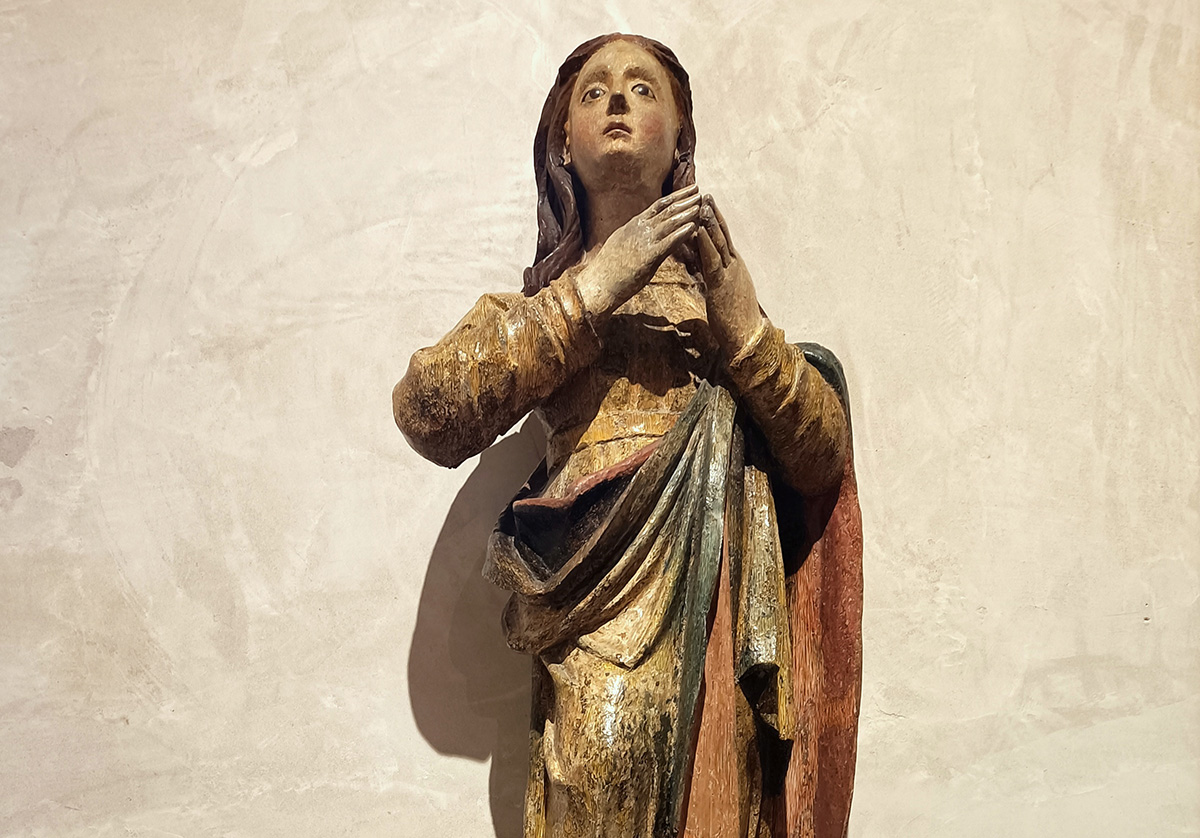
As a result of the above, the architecture of the Sanctuary of St Vitus the Martyr appears as an interesting mixture of military construction elements - the tower, the loopholes, the gatekeeper -, religious elements such as the rose window, the niches, the bell tower, and civil elements such as the noble staircase and the balconies. This peculiarity can be seen by entering the Sanctuary Museum, housed in the rooms surrounding the church, which in past centuries were used as a garrison and "accommodation" for wealthy pilgrims, and which hosts, among other things, an important collection of sacred silverware, ancient vestments from 18th-century Palermitan manufactories, as well as a 17th-century chasuble, objects from daily life given as gifts to the Saint, symbols of popular devotion, as well as paintings and sculptures, including contemporary ones.
Also worth admiring is the wooden statue of the Immacolatella, from the ancient Tonnara del Secco and now restored, representing a young Virgin, beautiful in its simplicity.

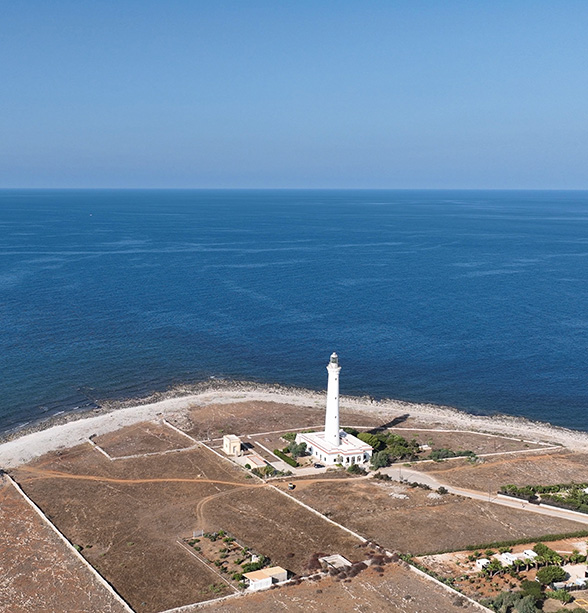
To the west of the town, the road continues towards the lighthouse at the end of Capo San Vito, first along the so-called 'little harbour', the under-billow pier, intended for pleasure boats - several operators offer charters and excursions from spring to late summer - and then the over-billow pier, where fishermen's boats are moored and where a recently made bronze statue of St Vitus symbolically 'protects' the San Vito navy.
In the harbour area, an important architectural element is the Torrazzo, a cylindrical tower, quite different from the other sighting structures in the area and believed to be of Arab construction, which has recently been renovated and is now a museum.
Continuing eastwards on the via del Secco, one goes towards Monte Monaco, beyond which lies the Zingaro Reserve. On this side of the coast are two towers that, together with that of Isuliddra, in Macari, were part of the sighting system to defend the Sicilian coast from incursions by sea developed at the end of the 16th century by the Florentine architect Camillo Camilliani on behalf of the Viceroys: Torre Sciere (of the Usciere) and Torre 'Mpiso (of the Impiccato). Both located overlooking the sea, like all Camillian constructions, these also have a square base structure, an embankment designed to contain a large cistern and ammunition store and, above it, a couple of rooms to house the military. Artillery pieces were positioned on the terrace and signals were made with smoke and fire: from each tower, in fact, it was possible to see the next one and therefore also to send messages or requests for help, which could make the circumnavigation of the island fairly quickly.
To the west of the town, the road continues towards the lighthouse at the end of Capo San Vito, first along the so-called 'little harbour', the under-billow pier, intended for pleasure boats - several operators offer charters and excursions from spring to late summer - and then the over-billow pier, where fishermen's boats are moored and where a recently made bronze statue of St Vitus symbolically 'protects' the San Vito navy.
In the harbour area, an important architectural element is the Torrazzo, a cylindrical tower, quite different from the other sighting structures in the area and believed to be of Arab construction, which has recently been renovated and is now a museum.
Continuing eastwards on the via del Secco, one goes towards Monte Monaco, beyond which lies the Zingaro Reserve. On this side of the coast are two towers that, together with that of Isuliddra, in Macari, were part of the sighting system to defend the Sicilian coast from incursions by sea developed at the end of the 16th century by the Florentine architect Camillo Camilliani on behalf of the Viceroys: Torre Sciere (of the Usciere) and Torre 'Mpiso (of the Impiccato). Both located overlooking the sea, like all Camillian constructions, these also have a square base structure, an embankment designed to contain a large cistern and ammunition store and, above it, a couple of rooms to house the military. Artillery pieces were positioned on the terrace and signals were made with smoke and fire: from each tower, in fact, it was possible to see the next one and therefore also to send messages or requests for help, which could make the circumnavigation of the island fairly quickly.

